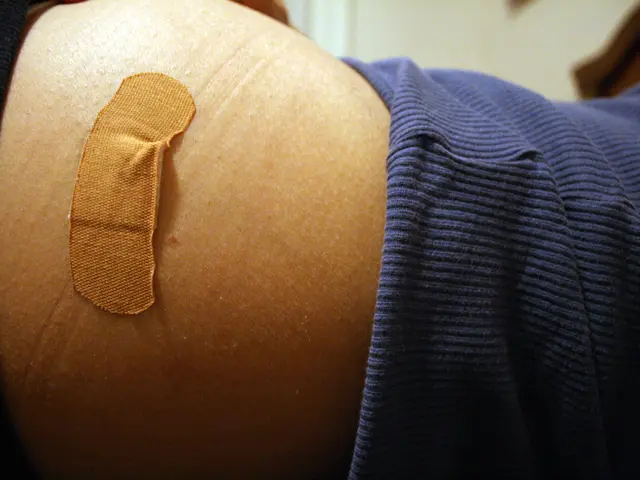Uncharted territories: Extracting ultrashort and short-chained PFAS from elaborate water resources
In a bid to address the growing concern over Per- and Polyfluoroalkyl Substances (PFAS) contamination, Chromafora's innovative SELPAXT technology is set to revolutionize the industrial wastewater treatment landscape. The 'polluter pays' principle is likely to be extended to the remit of PFAS treatment, placing increased pressure on PFAS polluters and demand for effective industrial wastewater PFAS treatment technologies.
SELPAXT, a patent-pending chemical-enhanced ultrafiltration process, selectively isolates and concentrates PFAS, making it a game-changer in the industry. This technology operates using proprietary surfactant chemistry and optimized membranes to deliver unrivaled PFAS concentration rates.
The process is effective at removing ultra-short, short-chain, and long-chain PFAS molecules from water streams. SELPAXT continuously doses water-soluble and biodegradable chemicals according to the incoming water matrix, ensuring optimal performance.
One of the key advantages of SELPAXT is its high tolerance to complex water matrices with elevated Total Organic Carbon (TOC) levels. This high selectivity means that SELPAXT requires no manual media replacement, reducing costs and minimizing on-site maintenance.
SELPAXT's 'clean-in-place' (CIP) feature between batches further reduces costs and minimizes on-site maintenance. Additionally, the system can concentrate PFAS waste down to a residual volume of less than 0.1%, significantly reducing the frequency of secondary destruction and associated costs.
In comparison to reverse osmosis (RO), SELPAXT produces 150-250 times less PFAS waste per 1,000 liters of water treated. This significantly reduces the environmental impact of PFAS treatment, aligning with the growing emphasis on sustainability.
Eliminating PFAS from wastewater, groundwater, and drinking water is becoming imperative due to increasing regulation. As regulations become stricter, the ability to remove ultra-short and short-chain PFAS molecules will become increasingly important. SELPAXT's effectiveness in this regard is a significant step forward.
Increasing scrutiny is being applied to both ultra-short and short-chain PFAS, leading to an expected rise in regional, national, and international regulation targeting these molecules. SELPAXT's ability to effectively remove these molecules positions it as a crucial solution in the fight against PFAS contamination.
SELPAXT's success is not limited to its efficiency. The technology is also energy-efficient, with low energy consumption and a reduced environmental footprint, delivering a consistently low OPEX.
The SELPAXT technology was developed by Chromafora itself, demonstrating the company's commitment to innovation and sustainability. SELPAXT systems are rapidly deployable and tailored to site specifications, offering a flexible solution for various industries.
In conclusion, SELPAXT by Chromafora provides a reliable and cost-efficient treatment that successfully removes up to 99.7% of PFAS, enabling companies to embrace a safe, sustainable, and PFAS-free future. This technology is a significant stride towards addressing the global challenge of PFAS contamination, offering a promising solution for industries striving for sustainability and compliance with regulations.
Read also:
- Postpartum Period and Gestational Diabetes: Does it Persist?
- Controlled spree of Legionnaires' disease among Harlem residents ceased, city health authorities confirm; however, locals push for increased openness and information disclosure
- Transform City for the Better
- Prostate Cancer Examination Guidelines, Outcomes, and Financial Aspects








